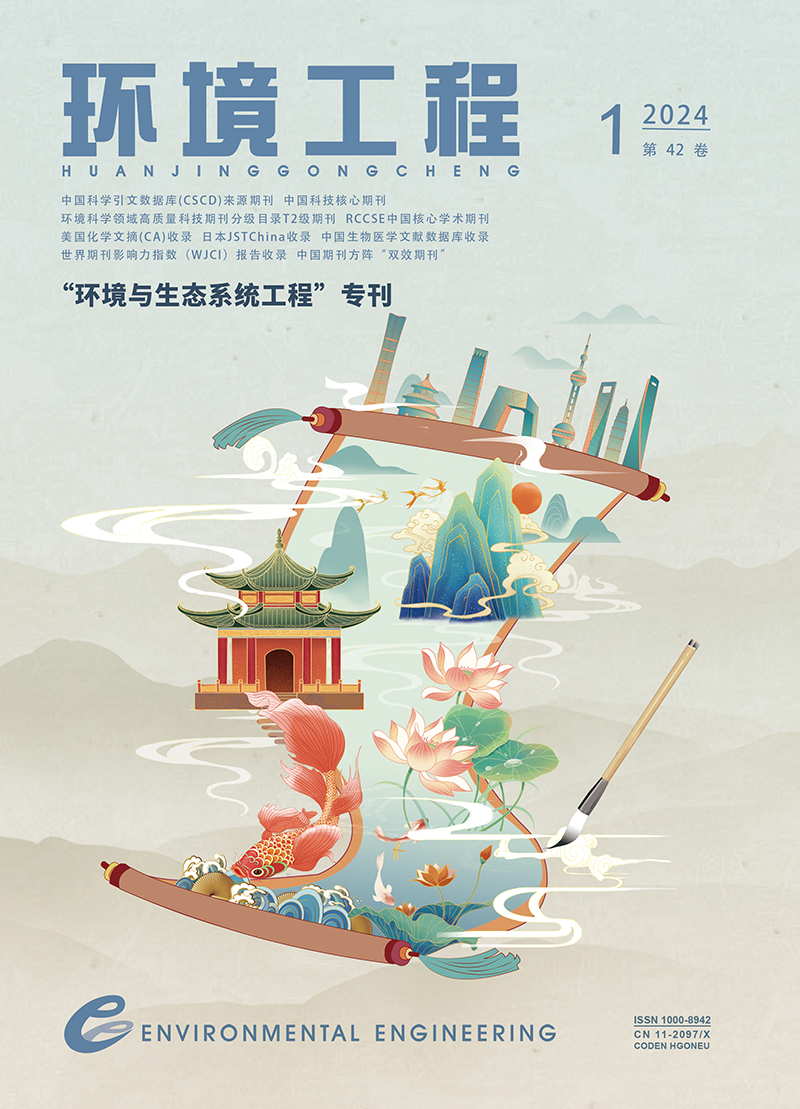| [1] |
王韶华,张伟.能源强度的影响因素、地区差异与协同降耗的研究进展[J].环境工程,2018,36(4):176-180.
|
| [2] |
毛显强,曾桉,邢有凯,等.从理念到行动:温室气体与局地污染物减排的协同效益与协同控制研究综述[J].气候变化研究进展,2021,17(3):255-267.
|
| [3] |
张瑜,孙倩,薛进军,等.减污降碳的协同效应分析及其路径探究[J].中国人口·资源与环境,2022,32(5):1-13.
|
| [4] |
王力,冯相昭,马彤,等.典型城市减污降碳协同控制潜力评价研究:以渭南市为例[J].环境科学研究,2022,35(8):2006-2014.
|
| [5] |
邢有凯,毛显强,冯相昭,等.城市蓝天保卫战行动协同控制局地大气污染物和温室气体效果评估:以唐山市为例[J].中国环境管理,2020,12(4):20-28.
|
| [6] |
LIU J,WOODWARD R T,ZHANG Y.Has carbon emissions trading reduced PM2.5 in China?[J].Environmental Science & Technology,2021,55(10):6631-6643.
|
| [7] |
ZENG A,MAO X,HU T,et al.Regional co-control plan for local air pollutants and CO2 reduction:method and practice[J].Journal of Cleaner Production,2017,140:1226-1235.
|
| [8] |
刘海艳,于会彬,王志刚.粤港澳大湾区温室气体和大气污染物协同控制现状分析[J].环境工程技术学报,2023,13(2):455-463.
|
| [9] |
LIU L,LIANG Q,SHUAI Y.Common driving forces of provincial-level greenhouse gas and air pollutant emissions in China[J].Environmental Science & Technology,2023,57(14):5806-5820.
|
| [10] |
黄儒霞,钟秋萌,吴晓慧,等.广东省经济结构转型对协同减污降碳的影响[J].环境科学研究,2022,35(10):2303-2311.
|
| [11] |
陈小龙,狄乾斌,吴洪宇.中国沿海城市群减污降碳协同增效时空演变及影响因素[J].热带地理,2023(11):2049-2059.
|
| [12] |
YI H,ZHAO L,QIAN Y,et al.How to achieve synergy between carbon dioxide mitigation and air pollution control?evidence from China[J].Sustainable Cities and Society,2022,78:103609.
|
| [13] |
LI J,JIAO L,LI R,et al.How does market-oriented allocation of industrial land affect carbon emissions?evidence from China[J].Journal of Environmental Management,2023,342:118288.
|
| [14] |
MENG L,GRAUS W,WORRELL E,et al.Estimating CO2 (carbon dioxide) emissions at urban scales by DMSP/OLS (defense meteorological satellite program’s operational linescan system) nighttime light imagery:methodological challenges and a case study for China[J].Energy,2014,71:468-478.
|
| [15] |
毛显强,曾桉,胡涛,等.技术减排措施协同控制效应评价研究[J].中国人口·资源与环境,2011,21(12):1-7.
|
| [16] |
毛显强,邢有凯,高玉冰,等.温室气体与大气污染物协同控制效应评估与规划[J].中国环境科学,2021,41(7):3390-3398.
|
| [17] |
GAO X,LIU N,HUA Y.Environmental Protection Tax Law on the synergy of pollution reduction and carbon reduction in China:evidence from a panel data of 107 cities[J].Sustainable Production and Consumption,2022,33:425-437.
|
| [18] |
潘思羽,张美玲.基于BP神经网络的甘肃省二氧化碳排放预测及影响因素研究[J].环境工程,2023,41(7):61-68.
|
| [19] |
陈阳,逯进,于平.技术创新减少环境污染了吗:来自中国285个城市的经验证据[J].西安交通大学学报(社会科学版),2019,39(1
):73-84.
|
| [20] |
张新生,魏志臻,陈章政,等.基于LASSO-GWO-KELM的工业碳排放预测方法研究[J].环境工程,2023,41(10):141-149.
|
| [21] |
郭克莎,彭继宗.二三产业结构变动与经济发展质量:上中等收入阶段向高收入阶段演进的国际经验[J].财贸经济,2022,43(8):5-26.
|
| [22] |
李政,张怡,赵哲.数字经济与工业绿色转型:基于科技创新的中介效应和门槛效应[J].工业技术经济,2023,42(10):3-16.
|
| [23] |
陈霄,毛霞,曹伟.环境信息公开、外商直接投资与城市空气污染:来自环境空气质量信息实时公开的证据[J].统计研究,2023,40(6):77-90.
|
| [24] |
刘志华,徐军委,张彩虹.科技创新、产业结构升级与碳排放效率:基于省际面板数据的PVAR分析[J].自然资源学报,2022,37(2):508-520.
|
| [25] |
WANG M,XU M,MA S.The effect of the spatial heterogeneity of human capital structure on regional green total factor productivity[J].Structural Change and Economic Dynamics,2021,59:427-441.
|
| [26] |
MANDERSON E,KNELLER R.Environmental regulations,outward FDI and heterogeneous firms:are countries used as pollution havens?[J].Environmental and Resource Economics,2012,51(3):317-352.
|
| [27] |
WU Y,SHI K,CHEN Z,et al.Developing improved time-series DMSP-OLS-Like data (1992—2019) in China by integrating DMSP-OLS and SNPP-VIIRS[J].IEEE Transactions on Geoscience and Remote Sensing,2022,60:1-14.
|
| [28] |
SHAN Y,GUAN D,ZHENG H,et al.China CO2 emission accounts 1997—2015[J].Scientific Data,2018,5(1):170201.
|
| [29] |
国家统计局城市社会经济调查司.中国城市统计年鉴2014—2020[M].北京:中国统计出版社,2021.
|
| [30] |
国家统计局.中国环境统计年鉴2014—2020[M].北京:中国统计出版社,2021.
|
| [31] |
国家统计局.中国统计年鉴2014—2020[M].北京:中国统计出版社,2021.
|
| [32] |
苏涛永,张亮亮,单志汶.产业耦合、区域异质性与新零售组织场域[J].商业经济与管理,2020(8):5-21.
|
| [33] |
李小飞,张明军,王圣杰,等.中国空气污染指数变化特征及影响因素分析[J].环境科学,2012,33(6):1936-1943.
|
| [34] |
霍伟东,李杰锋,陈若愚.绿色发展与FDI环境效应:从“污染天堂”到“污染光环”的数据实证[J].财经科学,2019(4):106-119.
|
| [35] |
CHEN Y,RAZA K,ALHARTHI M.The nexus between remittances,education,and energy consumption:evidence from developing countries[J].Energy Strategy Reviews,2023,46:101069.
|
| [36] |
CUI Y,WEI Z,XUE Q,et al.Educational attainment and environmental Kuznets curve in China:an aggregate and disaggregate analysis[J].Environmental Science and Pollution Research,2022,29(30):45612-45622.
|
| [37] |
ZHU T,PENG H,ZHANG Y,et al.Does higher education development facilitate carbon emissions reduction in China[J].Applied Economics,2021,53(47):5490-5502.
|
| [38] |
马倩倩,陈诗一.经济收敛与环境失衡:基于西部大开发战略的研究[J].世界经济,2023,46(8):108-133.
|
| [39] |
SUN H,NI S,ZHAO T,et al.The transfer and driving factors of industrial embodied wastewater in China’s interprovincial trade[J].Journal of Cleaner Production,2021,317:128298.
|
| [40] |
LI J,JIANG Q,CAI K,et al.Uncovering the spatially uneven synergistic effects of China’s enterprise-level industrial water pollutants reduction[J].Resources,Conservation and Recycling,2023,190:106811.
|
| [41] |
LIU C,HONG T,LI H,et al.From club convergence of per capita industrial pollutant emissions to industrial transfer effects:an empirical study across 285 cities in China[J].Energy Policy,2018,121:300-313.
|
| [42] |
FU S,MA Z,NI B,et al.Research on the spatial differences of pollution-intensive industry transfer under the environmental regulation in China[J].Ecological Indicators,2021,129:107921.
|
| [43] |
王晓林,张华明.外商直接投资碳排放效应研究:基于城镇化门限面板模型[J].预测,2020,39(1):59-65.
|
| [44] |
BU Y,WANG E,QIU Y,et al.Impact assessment of population migration on energy consumption and carbon emissions in China:a spatial econometric investigation[J].Environmental Impact Assessment Review,2022,93:106744.
|
| [45] |
中国政府网.发展改革委关于印发全国老工业基地调整改造规划(2013—2022年)的通知[EB/OL].https://www.gov.cn/gongbao/content/2013/content_2441018.htm.2013-03-18.
|
| [46] |
丁晓明,王成新,李梦程,等.中国老工业基地城市收缩的时空演变及影响因素分析[J].世界地理研究,2023(11):94-107.
|


 Login
Login Register
Register E-alert
E-alert






 DownLoad:
DownLoad: